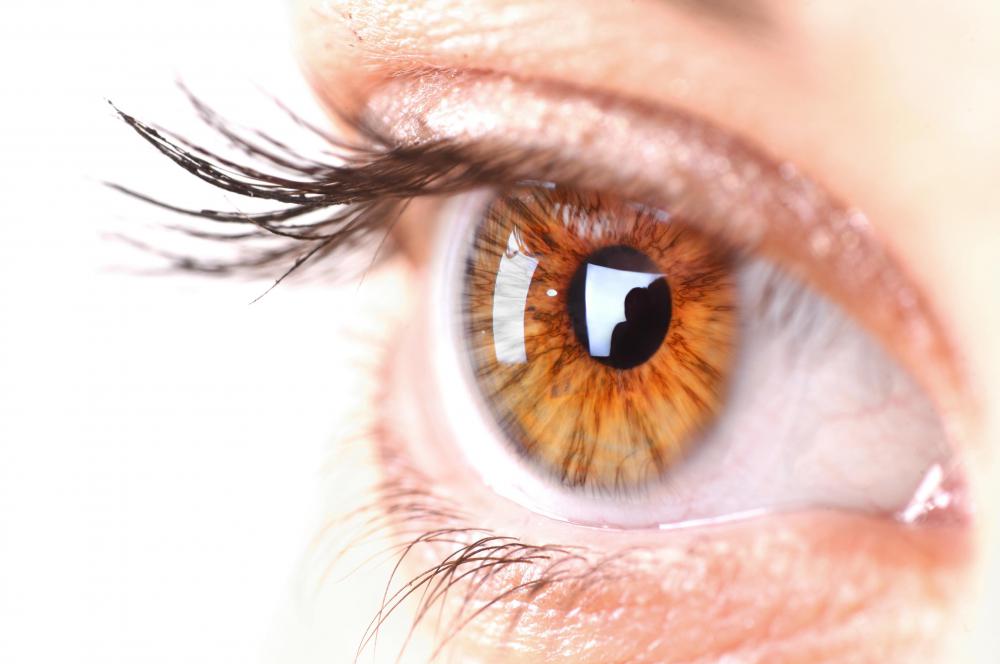At TheHealthBoard, we're committed to delivering accurate, trustworthy information. Our expert-authored content is rigorously fact-checked and sourced from credible authorities. Discover how we uphold the highest standards in providing you with reliable knowledge.
What is the Sclera?
The sclera is the opaque part of the eye. In humans and most other mammals, it is white, and hence commonly referred to as the white of the eye. It serves to protect the inner structures of the eye and maintain the eye's spherical shape. It contains collagen and elastic fiber. The muscles responsible for eye movement are also attached to the sclera.
The whites of the eyes are provided with many blood vessels, mostly on the surface. The eye is also covered with the conjunctiva, a clear mucous mebrane that also lines the inner eyelids. When the eyes are inflamed, the blood vessels of the sclera and the conjunctiva make them appear red.
While the mammalian sclera consists of connective tissue only, in some animals, it is strengthened by a structure called the scleral ring. Birds, some reptiles, and some fish have a scleral ring. It is made up of plates of bone or cartilage.

Some animals, including horses and some lizards, have a black sclera. In children, the whites of the eyes are less opaque and can appear somewhat blue, while in the elderly, fat deposits can make the whites of the eyes appear yellowish. Scleral melanocytosis is a harmless condition in which small blue-grey spots appear on the white of the eye.
The sclera has four layers, all made of connective tissue. The outermost layer is the episclera, which covers a layer of stroma. Underneath the stroma is the lamina fusca, and the innermost layer is the corneal endothelium. The corneal endothelium, as you may have guessed by its name, is shared by the sclera and the cornea, the transparent front part of the eye where the iris and pupil are located.

In addition to being continuous with the cornea, the sclera is also continuous with the dura mater, the outermost of the three meninges, membranes covering the brain. The white of the eye connects with the dura mater at the optic disc, located at the back of the eye. The optic disc is the location where the optic nerve exits the eye to carry visual information to the brain.
AS FEATURED ON:
AS FEATURED ON:















Discuss this Article
Post your comments